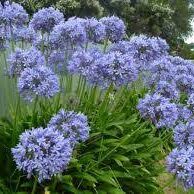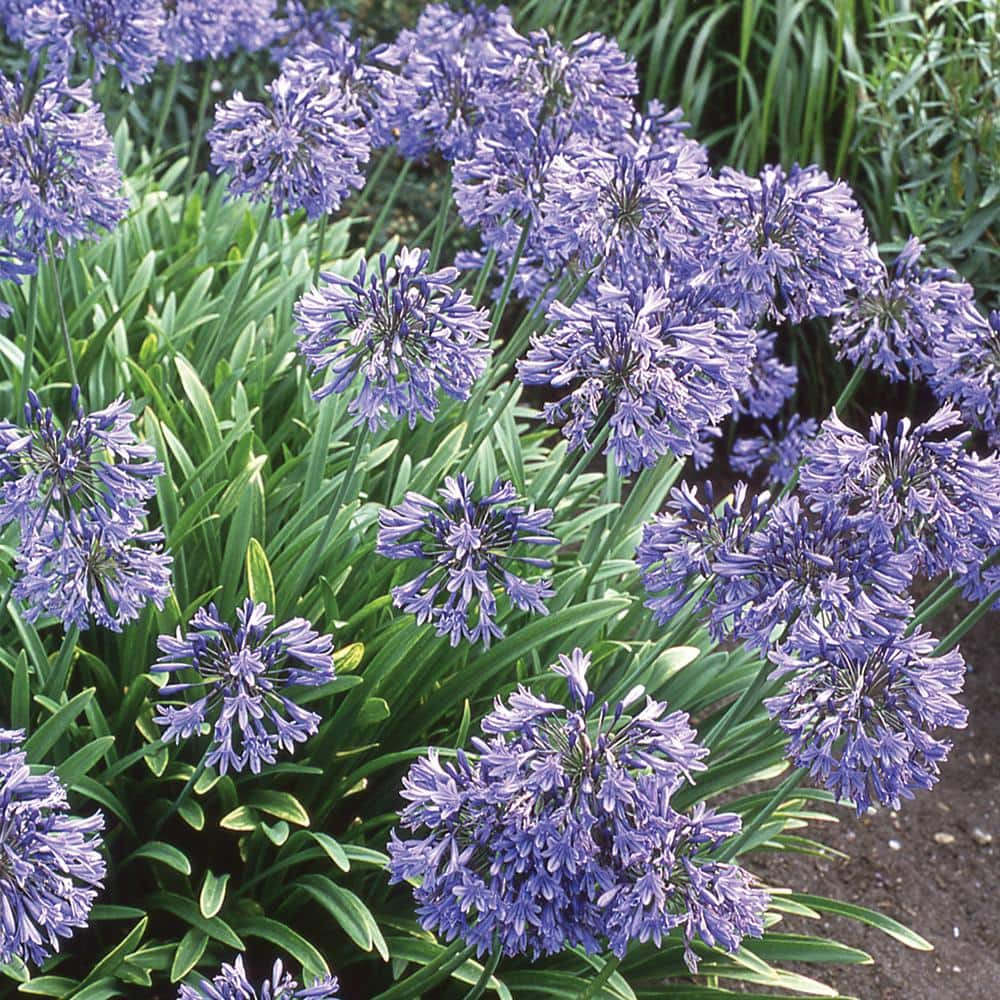Growing Agapanthus: A Full Overview to Beautiful Blooms
Growing Agapanthus: A Full Overview to Beautiful Blooms
Blog Article
Letting Loose the Secret to Successful Agapanthus Cultivation: Idea for a Flourishing Garden
In the realm of horticulture, cultivating agapanthus effectively requires a tactical approach that includes various elements of plant care. With mindful focus to information, one can unlock the secrets to nurturing these magnificent blooms, leading to a yard that grows with charm and vibrancy. By understanding the subtleties of agapanthus farming, one can produce an atmosphere where these plants thrive and bloom abundantly. In the following discussion, we will discover vital pointers and tricks that will certainly direct you towards a prospering agapanthus yard, providing understandings right into finest techniques, soil conditions, sprinkling methods, and more.
Planting Agapanthus: Finest Practices
When growing Agapanthus, correct soil prep work is important for making sure effective development and advancement of these gorgeous blossoms. Agapanthus, frequently referred to as Lily of the Nile or African lily, prospers in well-draining soil with a slightly acidic to neutral pH degree - Agapanthus. Prior to growing, it is crucial to modify hefty clay soils with raw material such as garden compost or peat moss to enhance drain and supply necessary nutrients for the plants
To grow Agapanthus, choose a location that gets complete sunshine to partial shade, as this will certainly advertise healthy growth and plentiful blooming. Dig a hole twice the diameter of the plant's root round and place the Agapanthus at the very same deepness it was formerly growing. Gently backfill the hole with soil, weighing down strongly to get rid of any type of air pockets around the origins.
Water the recently grown Agapanthus completely and remain to keep the dirt evenly damp, especially throughout the plant's energetic expanding period. Agapanthus. Applying a well balanced plant food once a month can further support the plant's growth and flowering. By complying with these finest techniques for planting Agapanthus, you can create a stunning display screen of these captivating flowers in your yard
Perfect Soil Conditions for Agapanthus
For ideal growth and flowering success of Agapanthus plants, ensuring the dirt conditions are excellent is essential. Agapanthus likes soil that is abundant in nutrients, so including a well balanced fertilizer throughout the expanding season can promote healthy and balanced growth and dynamic blossoms.

Watering and Fertilizing Tips
To guarantee healthy growth and lively flowers, correct watering and fertilizing strategies are important for successful Agapanthus growing. Agapanthus plants gain from regular watering, specifically during the growing period. It is suggested to water deeply once a week, guaranteeing the soil is wet however not saturated. Throughout heat or in pots, even more regular watering may be necessary to avoid the soil from drying out completely.
When it comes to feeding Agapanthus, a balanced fertilizer with equivalent parts nitrogen, phosphorus, and potassium can be used in the springtime to advertise healthy growth and flowering. Slow-release fertilizers are optimal for giving nutrients gradually over an extended duration. Prevent over-fertilizing, as this can bring about extreme vegetation growth at the expenditure of blooms.
Furthermore, including organic matter like compost into the dirt can enhance nutrient degrees and enhance dirt click resources framework, aiding in the general wellness of the Agapanthus plants. By complying with these watering and feeding tips, gardeners can ensure their Agapanthus plants grow and produce sensational screens of blossoms.
Pruning and Deadheading Techniques
Correct trimming and deadheading strategies play a crucial function in preserving the wellness and visual appeals of Agapanthus plants, enhancing the vital techniques of watering and fertilizing for successful cultivation. Pruning Agapanthus entails getting rid of spent blossom heads, yellowing or dead leaves, and general shaping of the plant to promote much better growth. Deadheading, the process of getting rid of faded blossoms, not just enhances the plant's appearance but also encourages further flowering.
When deadheading Agapanthus Agapanthus, it is recommended to snip off the flower stem at the base utilizing sharp, tidy shears. This process reroutes the plant's power from seed production back into origin and foliage growth, promoting a healthier and extra durable plant. Routine deadheading can prolong the flowering duration of Agapanthus and stop self-seeding, which can lead to overcrowding.
In regards to pruning, Agapanthus normally take advantage of a light trim after blossoming to clean up the plant and encourage fresh growth. Reducing the invested blossom stems and getting rid of any damaged or dead vegetation assists preserve the plant's vigor and overall appearance. Nevertheless, it is necessary to avoid cutting right into the crown of the plant, as this can deteriorate its wellness.

Protecting Agapanthus From Vermins and Diseases
Applying reliable parasite and condition monitoring approaches is critical to securing the health and vigor of Agapanthus plants in growing. Agapanthus are typically hardy plants, yet they can still succumb numerous insects and diseases otherwise properly taken care of. One common pest that affects Agapanthus is the Agapanthus borer, a caterpillar that passages right into the plant, triggering damage to the flowers and leaves. To prevent infestations, normal evaluation of the plants is essential. If borers are found, they can be manually eliminated, or insecticidal soap can be used as see this website a control procedure.
Along with pests, Agapanthus are vulnerable to conditions such as origin rot and fungal leaf areas. These concerns can frequently be stopped by ensuring proper drainage and preventing overwatering. If indicators of illness appear, influenced parts of the plant must be quickly gotten rid of to avoid further spread. Fungicides may likewise be used as a treatment step, adhering to the producer's guidelines carefully. By remaining vigilant and attending to parasite and disease problems without delay, gardeners can assist their Agapanthus grow and thrive.

Conclusion
In verdict, successful farming of agapanthus calls for correct growing strategies, excellent dirt problems, appropriate watering and fertilizing, normal pruning and deadheading, and defense from illness and insects. By complying with these tips and methods, gardeners can make sure a flourishing garden loaded with lovely agapanthus flowers. Agapanthus. Keep in mind to maintain consistent treatment and focus to information to promote the health and longevity of these magnificent plants
When growing Agapanthus, appropriate soil prep work is important for making certain successful growth and advancement of these beautiful flowers.Water the recently grown Agapanthus extensively and continue to keep the dirt uniformly damp, especially throughout the plant's energetic expanding season.For ideal development and growing success of Agapanthus plants, making certain the dirt conditions are perfect is critical. When planting or hair transplanting Agapanthus, make certain the dirt is well-prepared to offer the essential structure for the plants to establish themselves efficiently. One typical pest that impacts Agapanthus is the Agapanthus borer, a caterpillar that tunnels into the plant, causing damage to the flowers and leaves.
Report this page